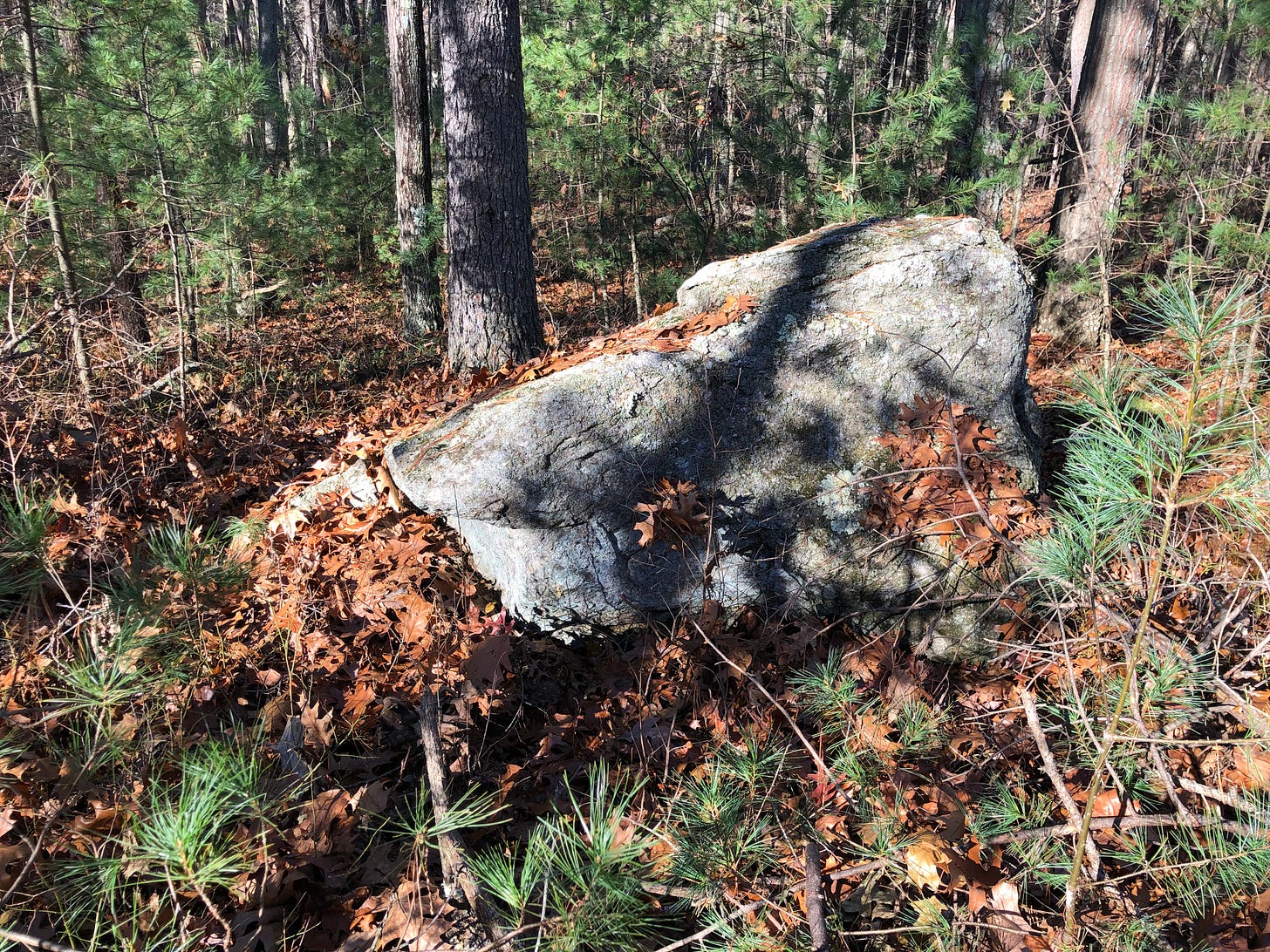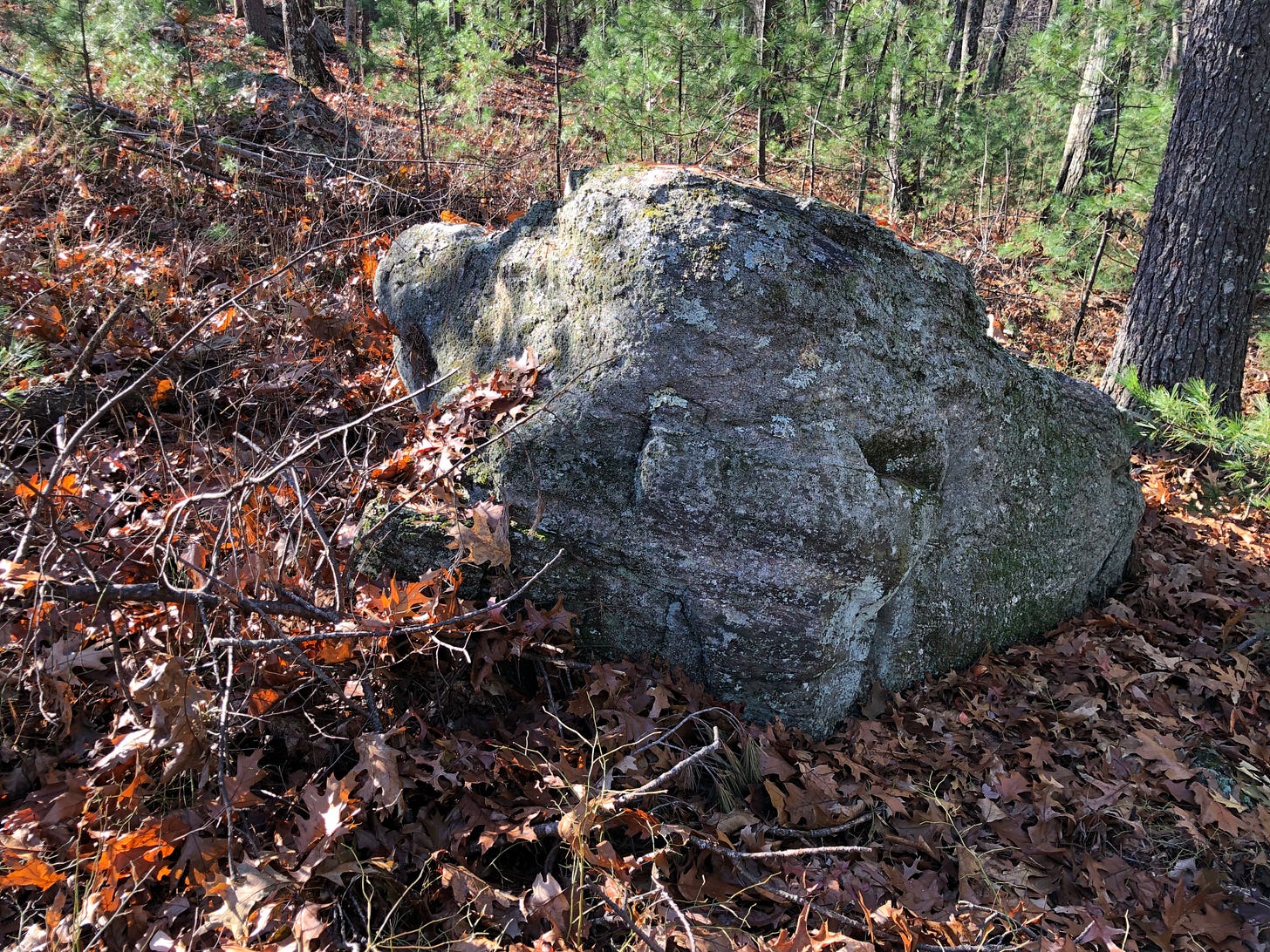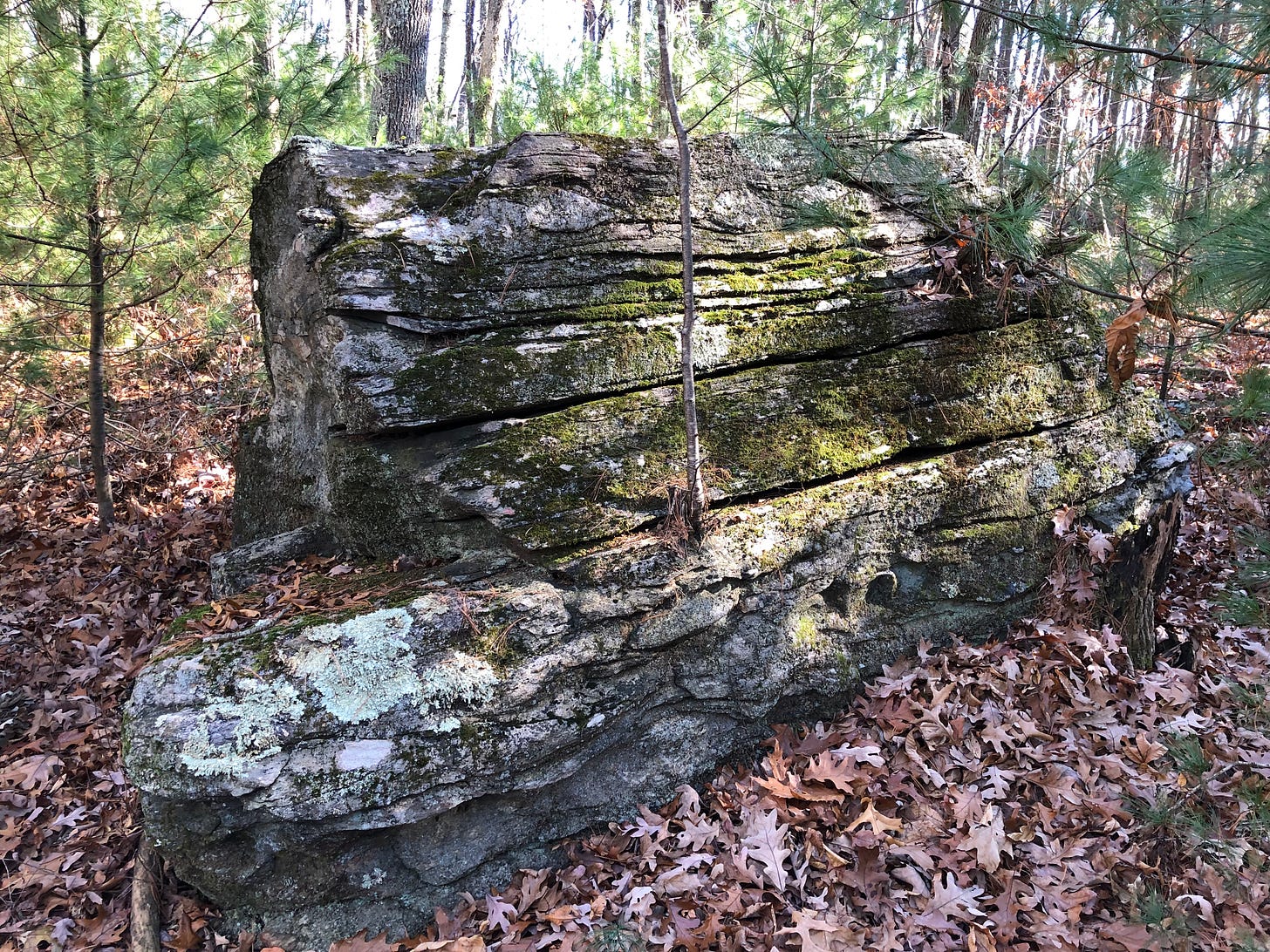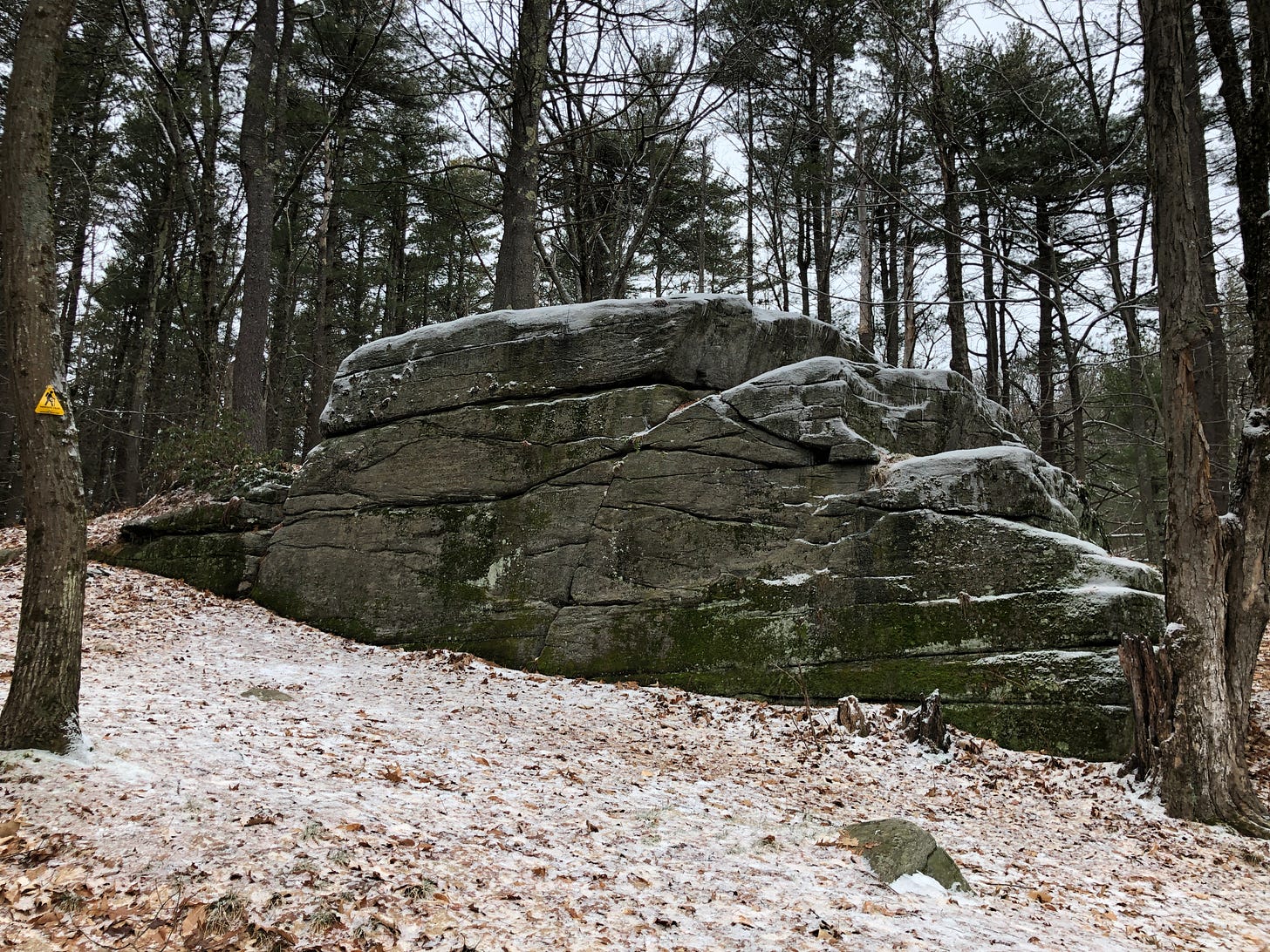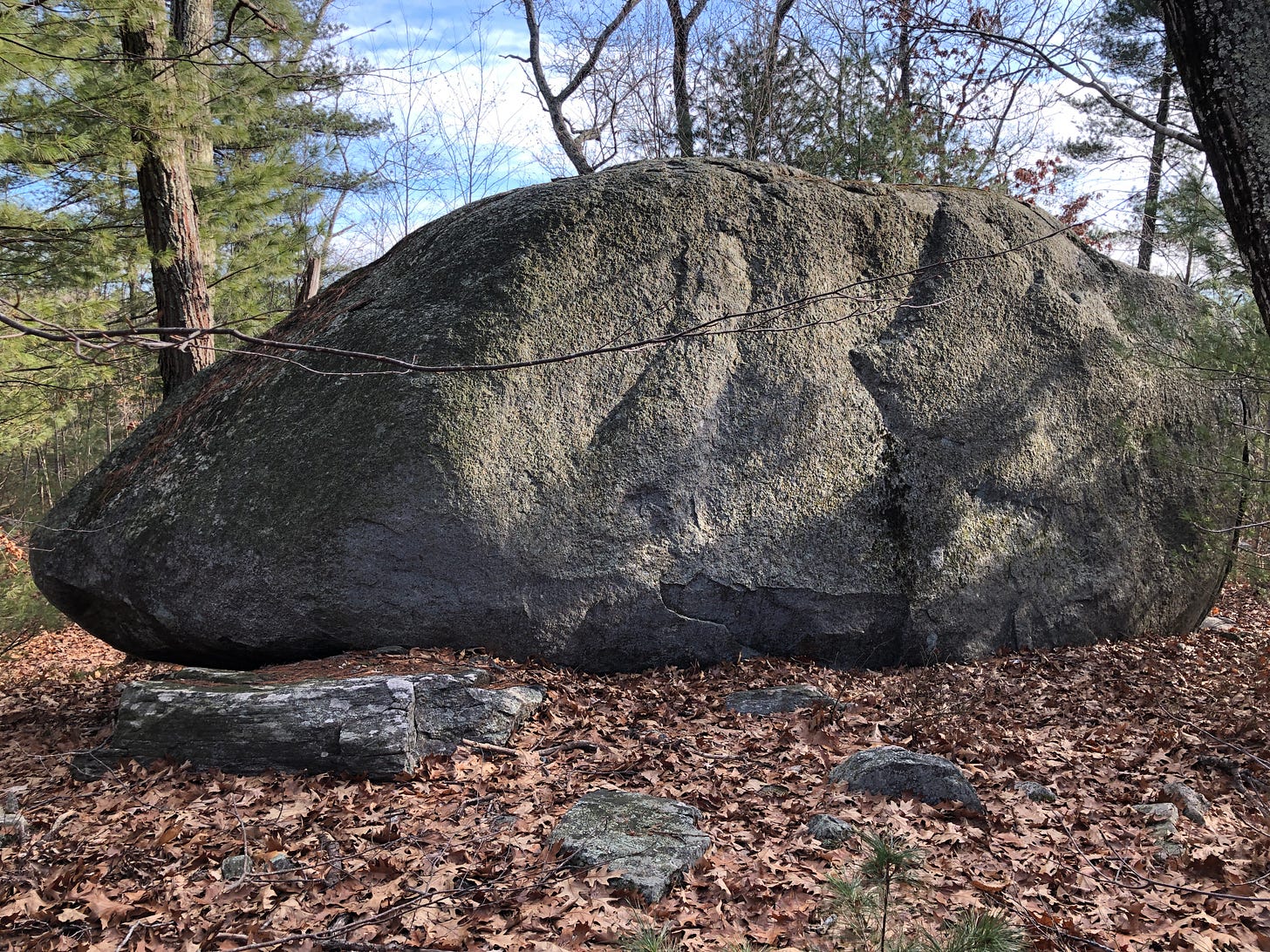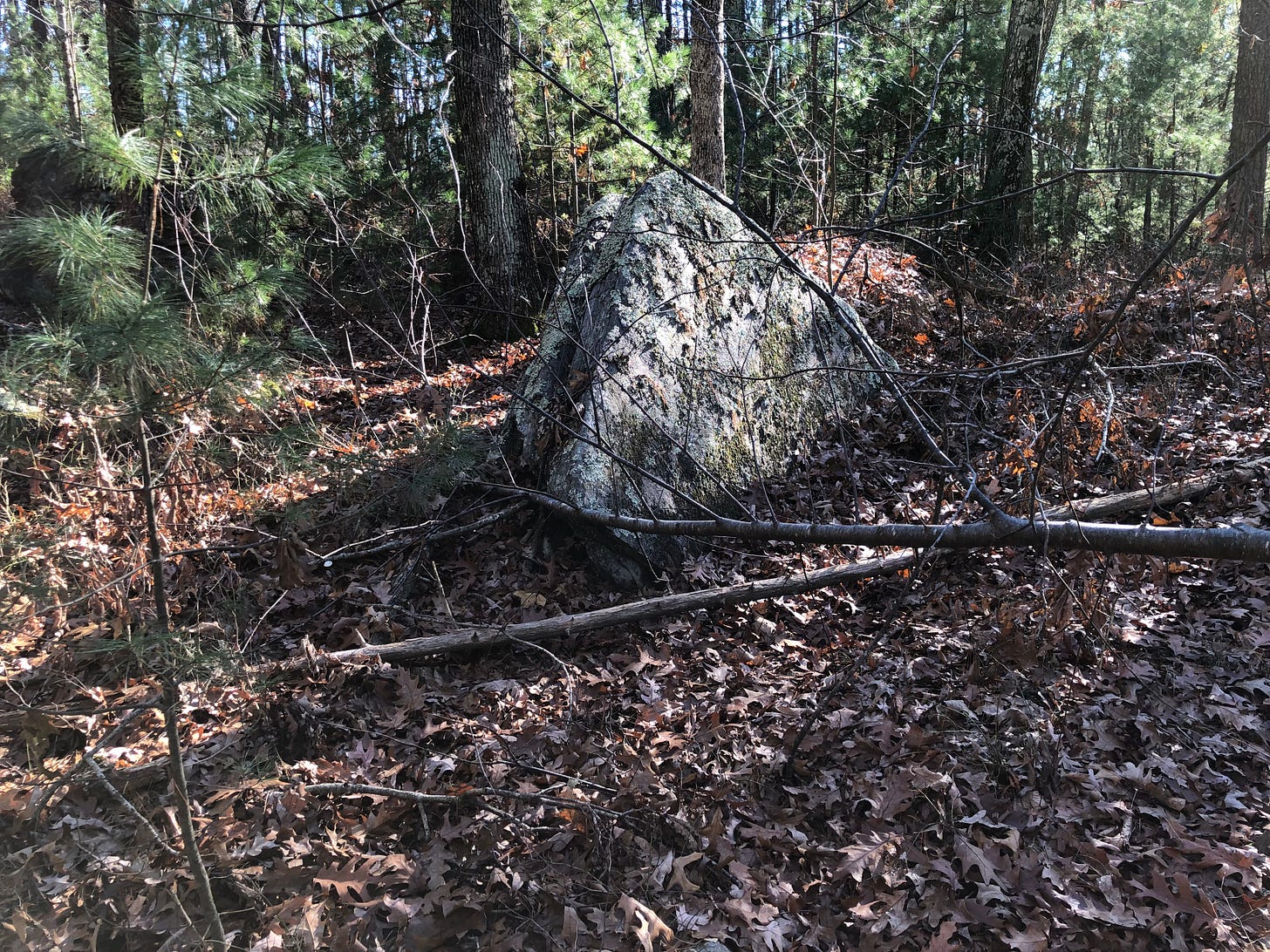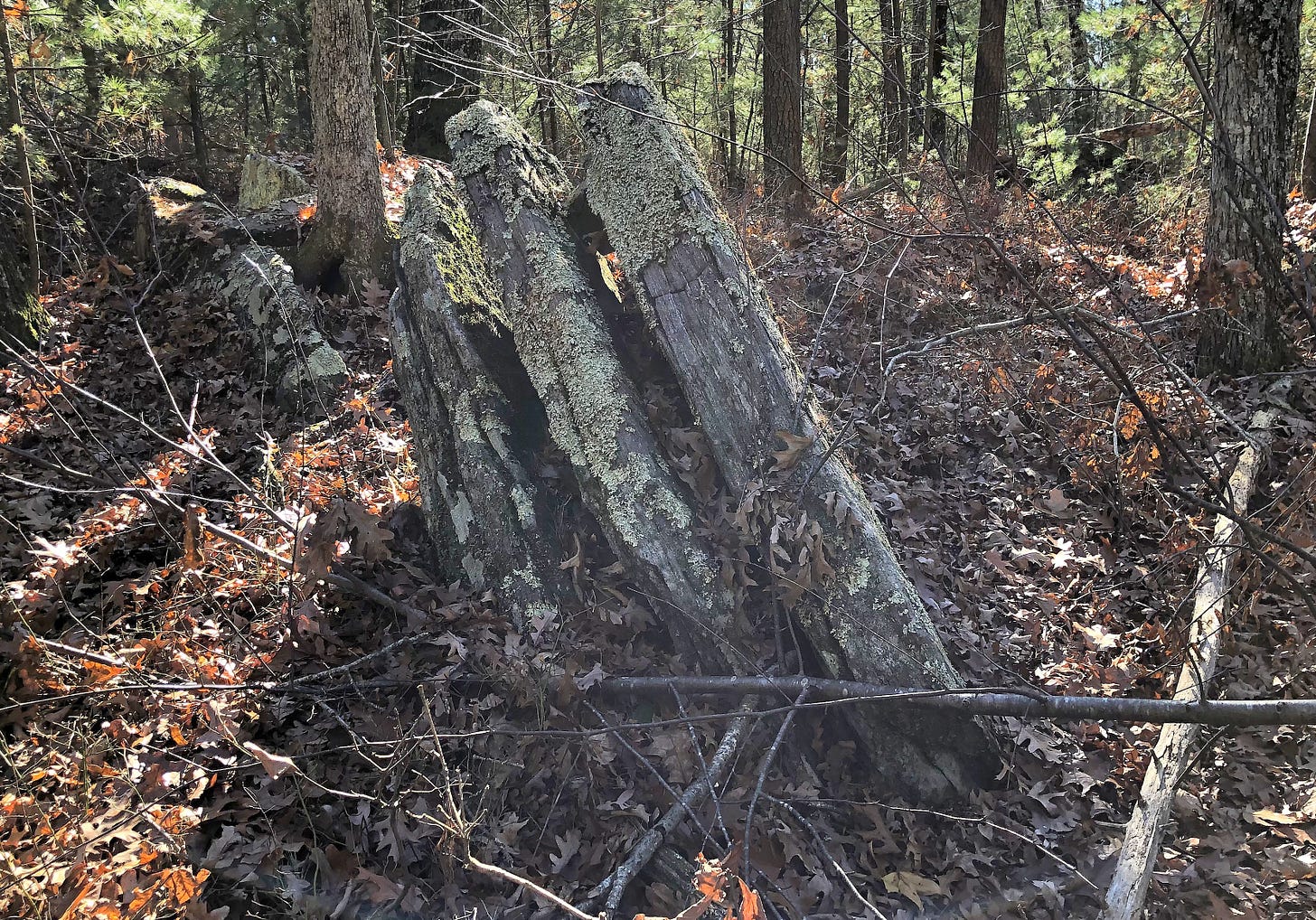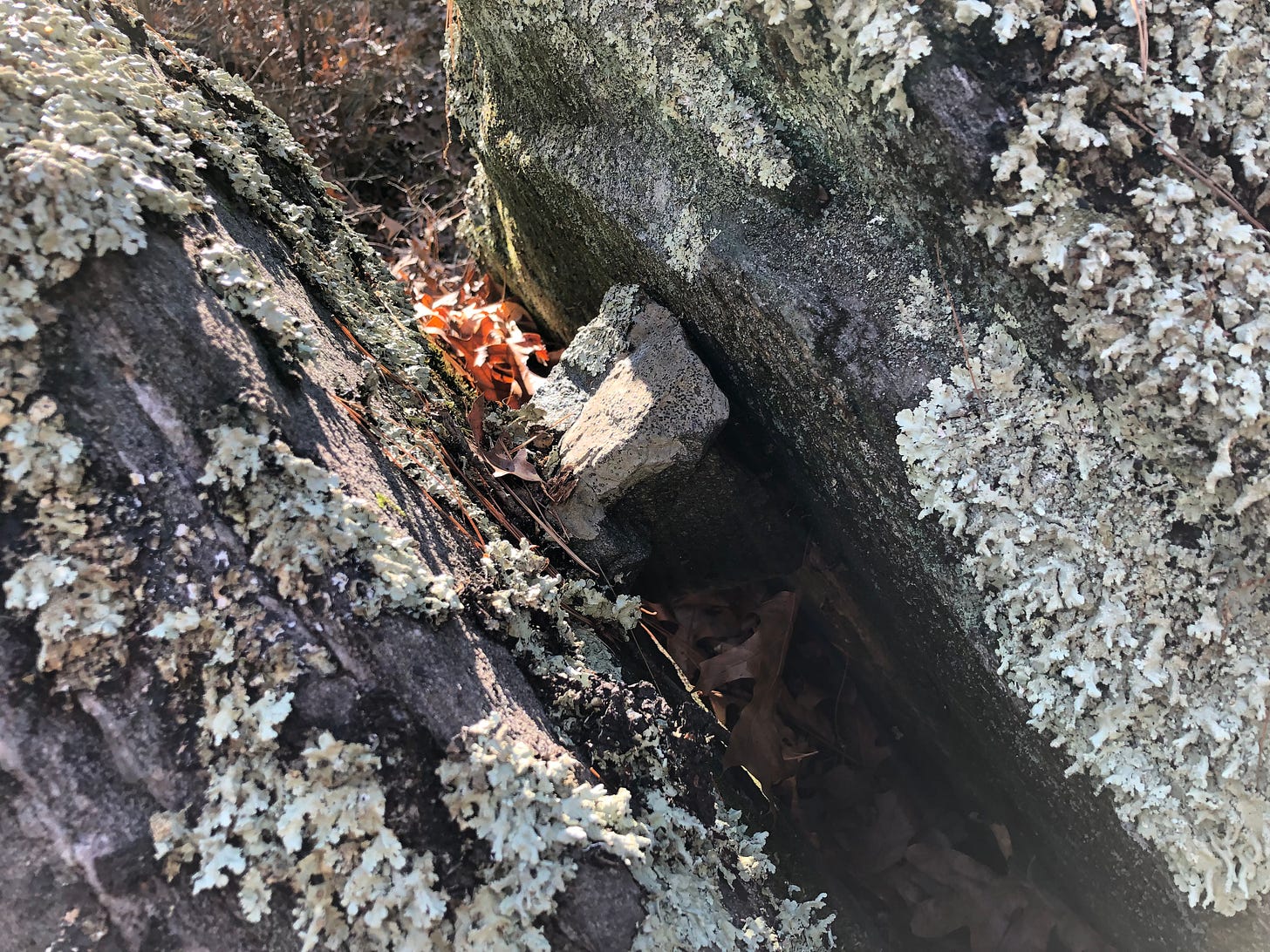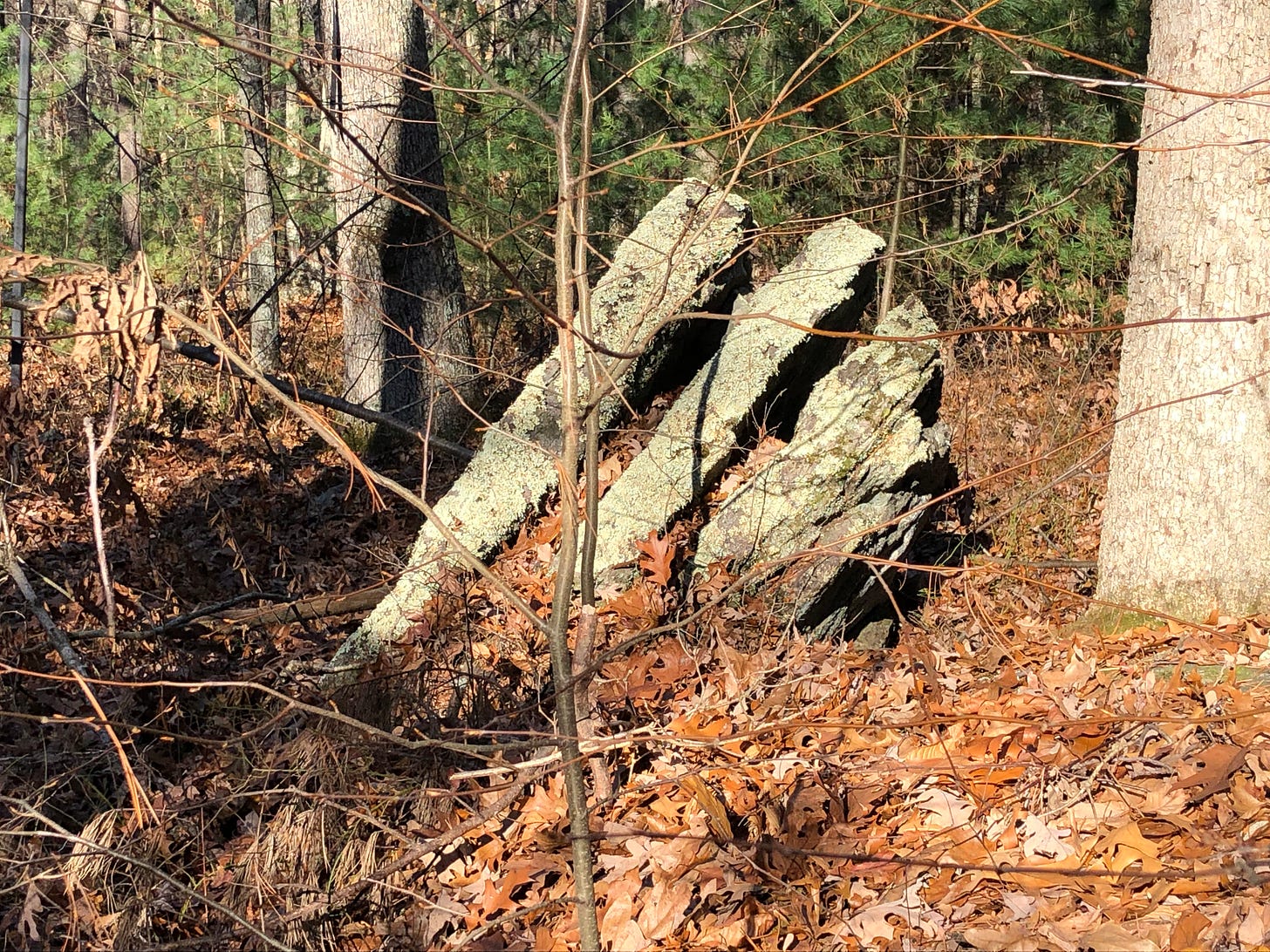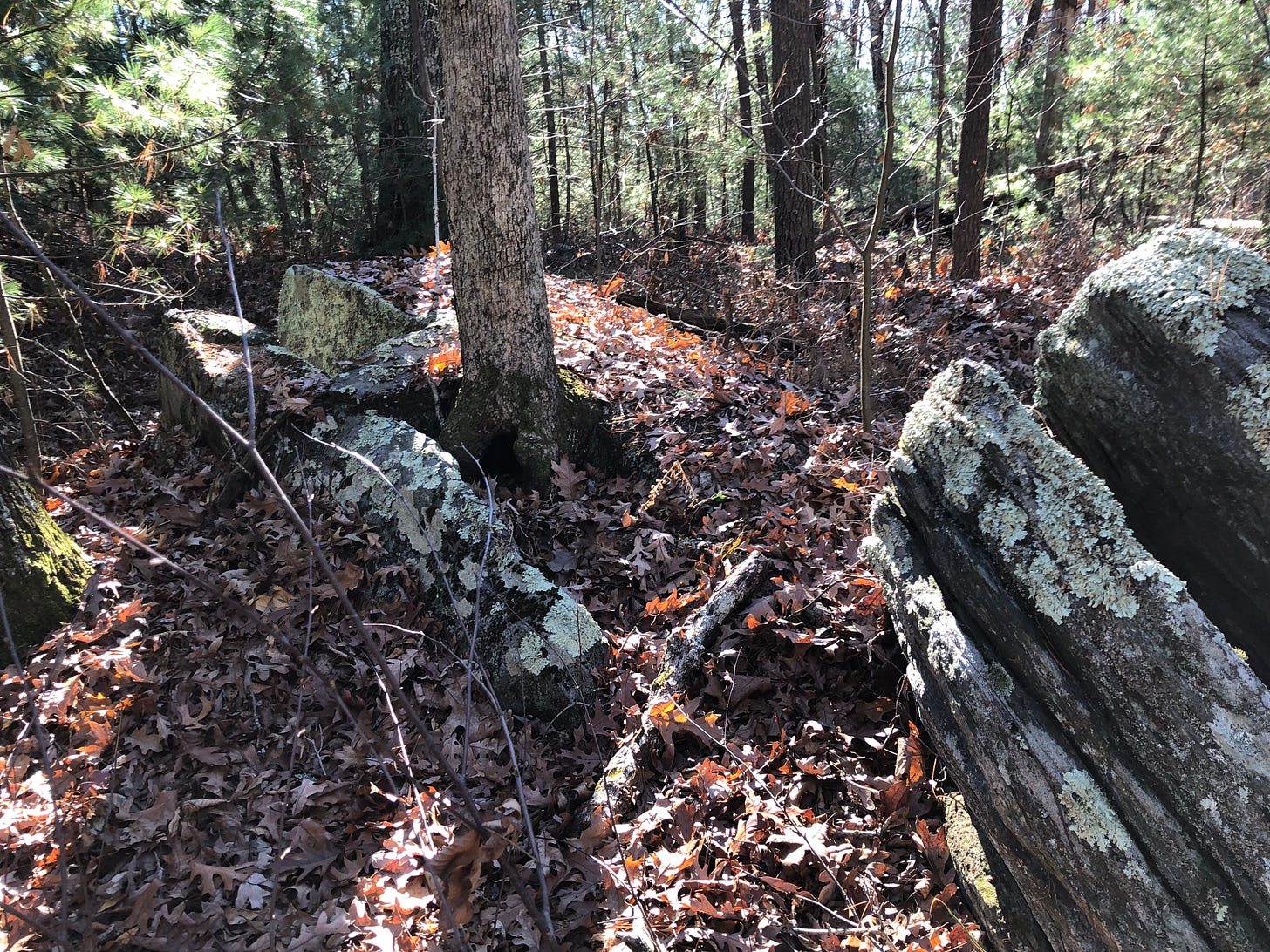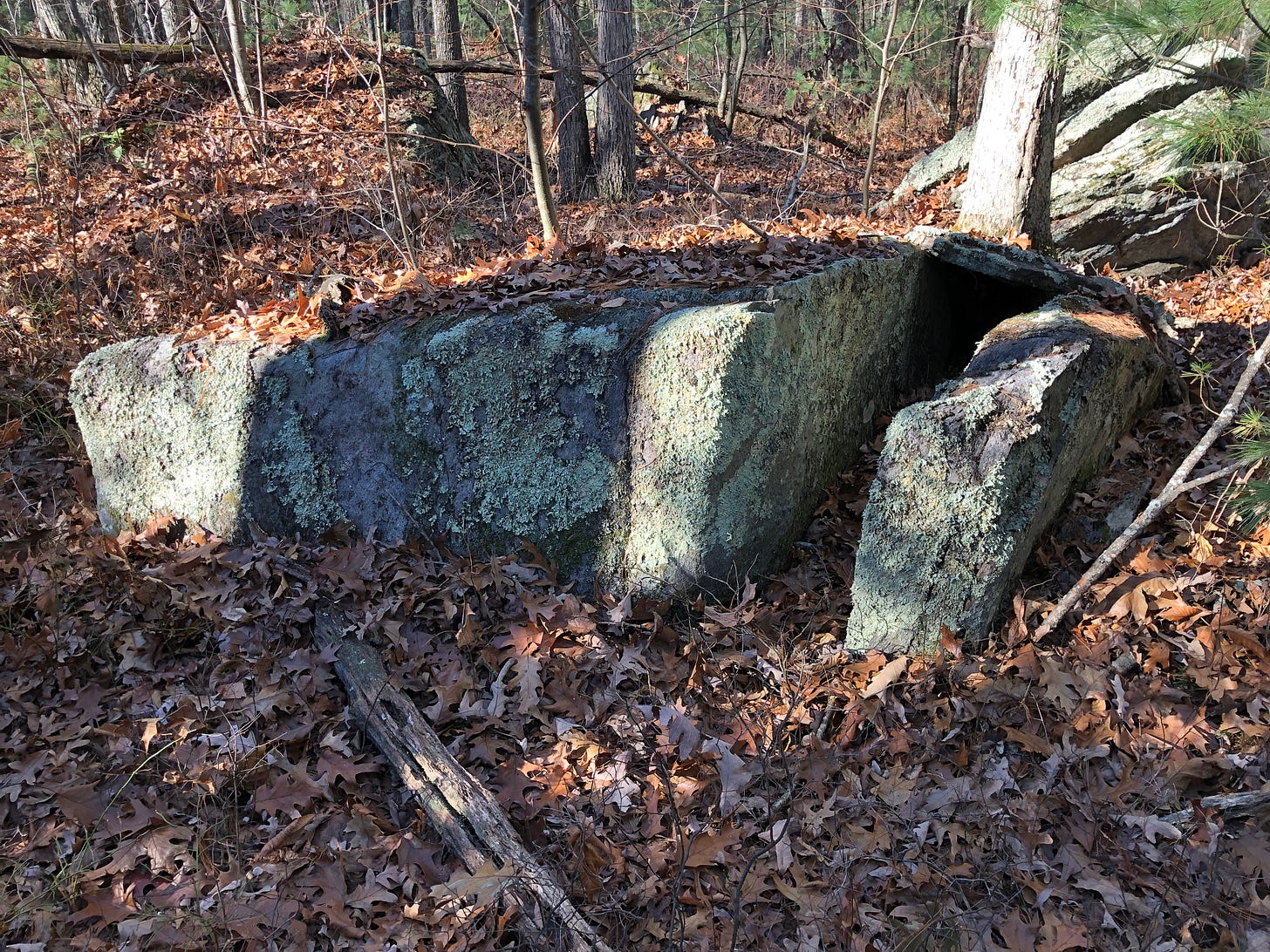Rediscovering Kequasagansett 8
Possible Sacred Stone and Water Works Around Gates Pond in Berlin, Massachusetts
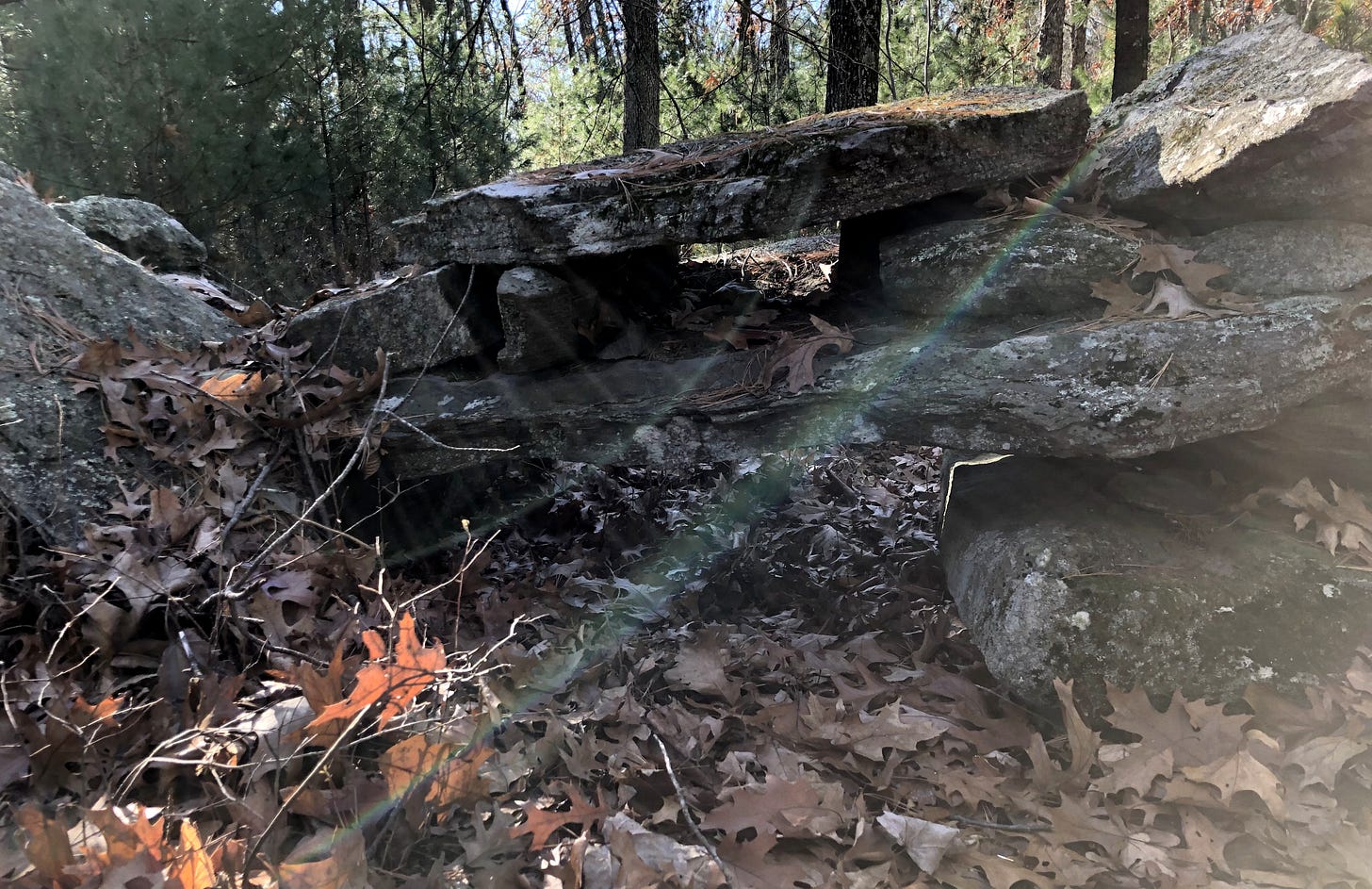
The Hilltop - A Sacred Precinct?
Continuing our look at the stones atop the North-Easternmost of the hills known as Sawyer Hill, North of Gates Pond in Berlin, Massachusetts.
Part Two — The Western Side of the Central Stone Row
“And Then?”
A word or two about geology. As mentioned when discussing the boulders on the eastern side, I'm not denying glaciers are likely responsible for depositing many of these boulders in this general vicinity. I am suggesting that's only part of the story here. What happened to the stones after they were moved by the glaciers?
Millions of human beings ranged across this landscape for over 10,000 years before European colonists arrived. This was no Pristine Wilderness, although that myth was developed and encouraged by the descendants of those who later settled here.
How many mistaken assumptions about the nature of geology have arisen from the myth of the Pristine Wilderness? How many have stemmed from the second operative lie we hear far too often to be true, “Indians never lived here, they only passed through and hunted or fished here?”
This second lie gives comfort to many who otherwise would have to admit they live on stolen land. But maintaining it displays a callous indifference and ignorance towards the nomadic way of life lived by Indigenous Peoples in ancient northeastern North America, who spent different seasons of the year in different places, ranging across an entire landscape, not confined to a few “improved” acres, the Europeans’ standard for “living in a place”.
History is being rewritten, and previously unknown histories uncovered, as Indigenous authors and Indigenous sources provide necessary, corrective viewpoints on the larger history of North America. This is sometimes called “Decolonizing” History. Or Decolonizing anthropology. Or Decolonizing archaeology.
Geology could also use some Decolonizing, some reckoning with the assumptions made in its past which were dependent upon these lies of a Pristine Wilderness and lack of habitation, which we now know were untrue. Science should be based on facts.
Offering a geological explanation for any stone work is neither an end point nor a closing argument, but the preface to a discussion which begins, “And Then?”
And Then, the “Indians” Named Prominent Stones.
For Indigenous Peoples in the Northeastern part of what is now North America, enormous boulders were more than landmarks. Somehow, they bore witness — acted as official watchers to momentous events.
To the north of here, in Princeton, Massachusetts — a place, like Berlin, once part of larger, frontier Lancaster — we find Redemption Rock, where a major hostage and peacemaking exchange took place in 1676 during the first bloody war between colonists and Indigenous Peoples being forced from their lands.
To the south of the pond here, on a hill, we find King Philip’s Rock, a prominent boulder named for the Indigenous leader of unified Indigenous Peoples in that first conflict, said to be a meeting place for him and his warriors before and after battles in Lancaster and Marlborough. Metacom, a Wampanoag, a son of Massassoit who had worked with the Plymouth settlers, was known to the Europeans as “Philip”.
This is not the only King Philip’s Rock. Three or four large boulders around this part of Central Massachusetts bear this name.
As pointed out in relating the history of this place earlier, there is a prominent boulder associated with local Indigenous Peoples, Sleeping Rock, downslope northwest of here. As William Houghton related in his history of Berlin:
“The rock South of the Hudson Rd, between Captain Silas Sawyer’s and George H. Bruce’s, has been known as Sleeping Rock from the early times, so named in some of the first deeds. The origin of the name appears to have been from the fact that Indians occasionally used it as a shelter and to sleep under… This rock was a corner of the original Gates farm.”
Gates was said to have been an early settler of Lancaster, though there’s no evidence he nor any of his heirs ever lived on this land.
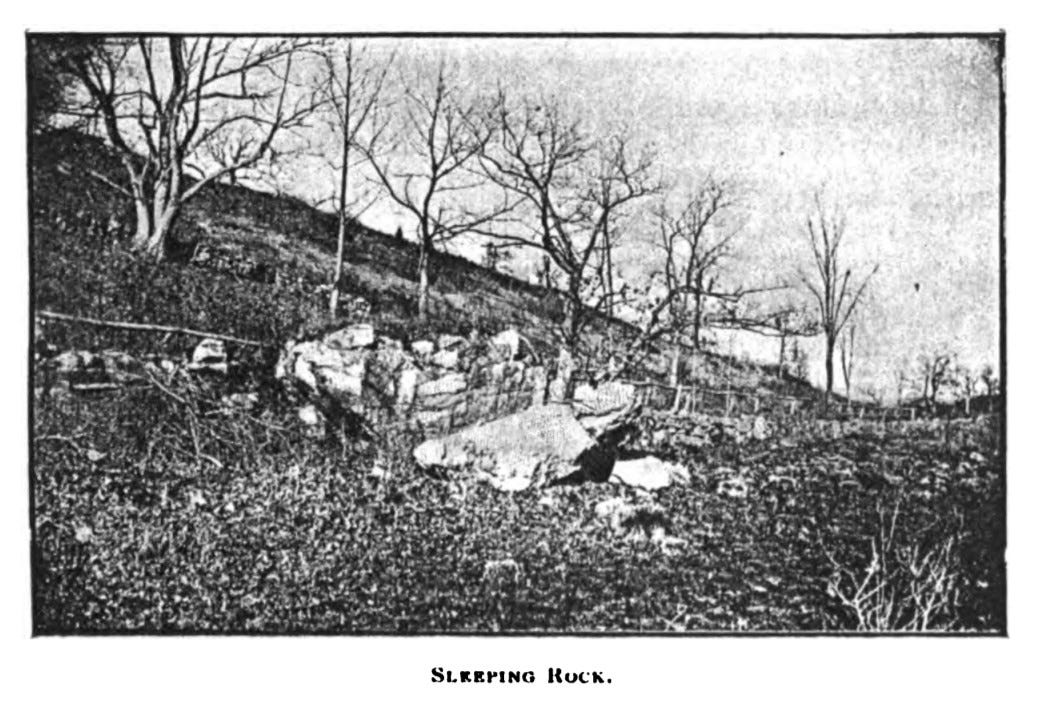
That original 1717 deed gives Gates:
“…a considerable part of a pond lying within the said land and bounded on all sides of it by common undivided land; a rock called the Sleeping rock is on the outside of it, near the northwest corner. The place where it Lyes by the Indians was called Kequasagansett, and is laid out to the estate of the said Stephen Gates for 314 acres.”
Sleeping Rock. King Philip’s Rock(s). Redemption Rock. There are more — innumerable other “Indian Stones” lay around the Northeast, referenced in local histories and small towns’ oral traditions. These names are obvious, historical evidence of a deep and meaningful association between Indigenous Peoples of the Northeast and Prominent Stones.
One more morsel of food for thought before serving up the main course of these stones on this hilltop…
The earliest Indigenous People-constructed stone row discovered in Massachusetts was excavated only a couple of miles south of here in Marlborough’s Flagg Swamp. A 4000 year-old stone “wall” was uncovered at an ancient rockshelter, the remains of a Bear’s jaw next to it, apparently tied together ritually. If curious, there’s a public report on that dig on the State of Massachusetts site: https://www.sec.state.ma.us/mhc/mhcarch/archresources/Ancient_Winters_REPORT.pdf.
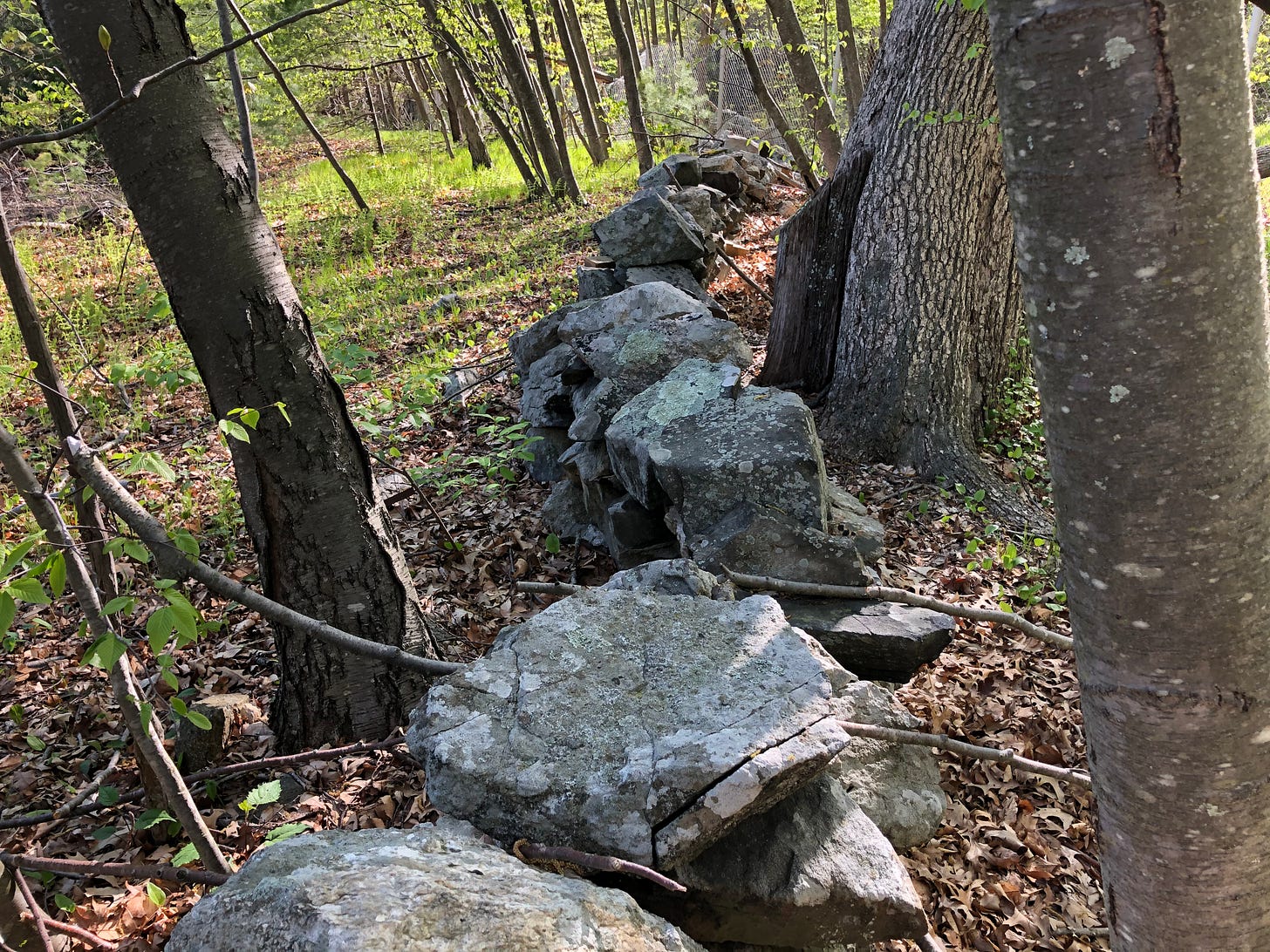
The evidence is there. And here. Indigenous Peoples in the Northeast worked with stone. Not carving the stone with a metal chisel — though the European settlers did indeed carve their side of the bargain at Redemption Rock into the stone — but by moving, chipping, working stone with stone, perching stone on stone.
Some confusion can greet the idea of Indigenous Peoples working with stone in the Northeast when it’s first encountered. Hearing that some of the old stone “walls”, stone “chambers” and stone “cairns” may pre-date European settlement and be of Indigenous origin, and that Indigenous Peoples worked with stone in this area, some assume further European-style stone-working is being claimed, and reject the entire idea outright — but this is not the case.
In some of these Indigenous stone constructs, we may see some resemblances to similar European structures. It would be a mistake, however, to “read” these forms through the filter of a different culture, and extrapolate from there. Instead, we want to Decolonize our concepts of what it means to Work with Stone.
What does it mean to work with stone in this way? I have some ideas. It means not to construct grand idols or palaces, but instead to recognize Prominent Stones as such, already present in nature. Not to bound or lay any claim on the land using stone but instead to augment what already emerges in the bedrock of ridges and ledges. Not to pen in animals with stone but to celebrate animal-like spirits in effigy seemingly already present in the form of some of the stones.
Let’s see the stones present on the Western side of the hilltop.
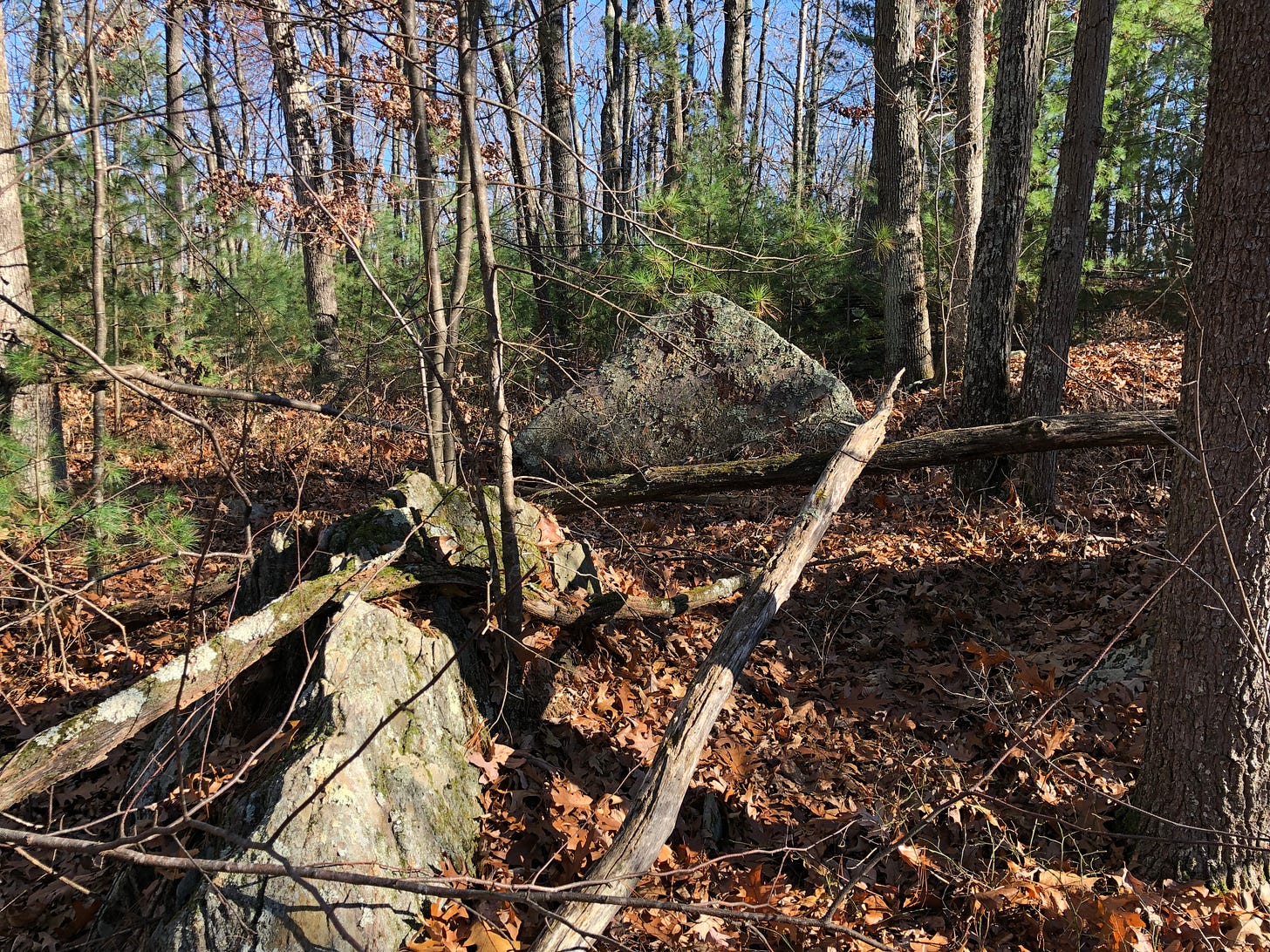
Crossing the central stone row and climbing back up towards the hilltop on the western side, I became slowly, steadily more awestruck by the stones and the possible work I was observing.
One cluster featured split stones, including a triple-split triangular stone, others around it on the ground, the splits propped and wedged open.
Author’s Note: I’ve apparently run out of space in this email/post, so I’ll pick this up in the next one. Not the most stylish of endings…





